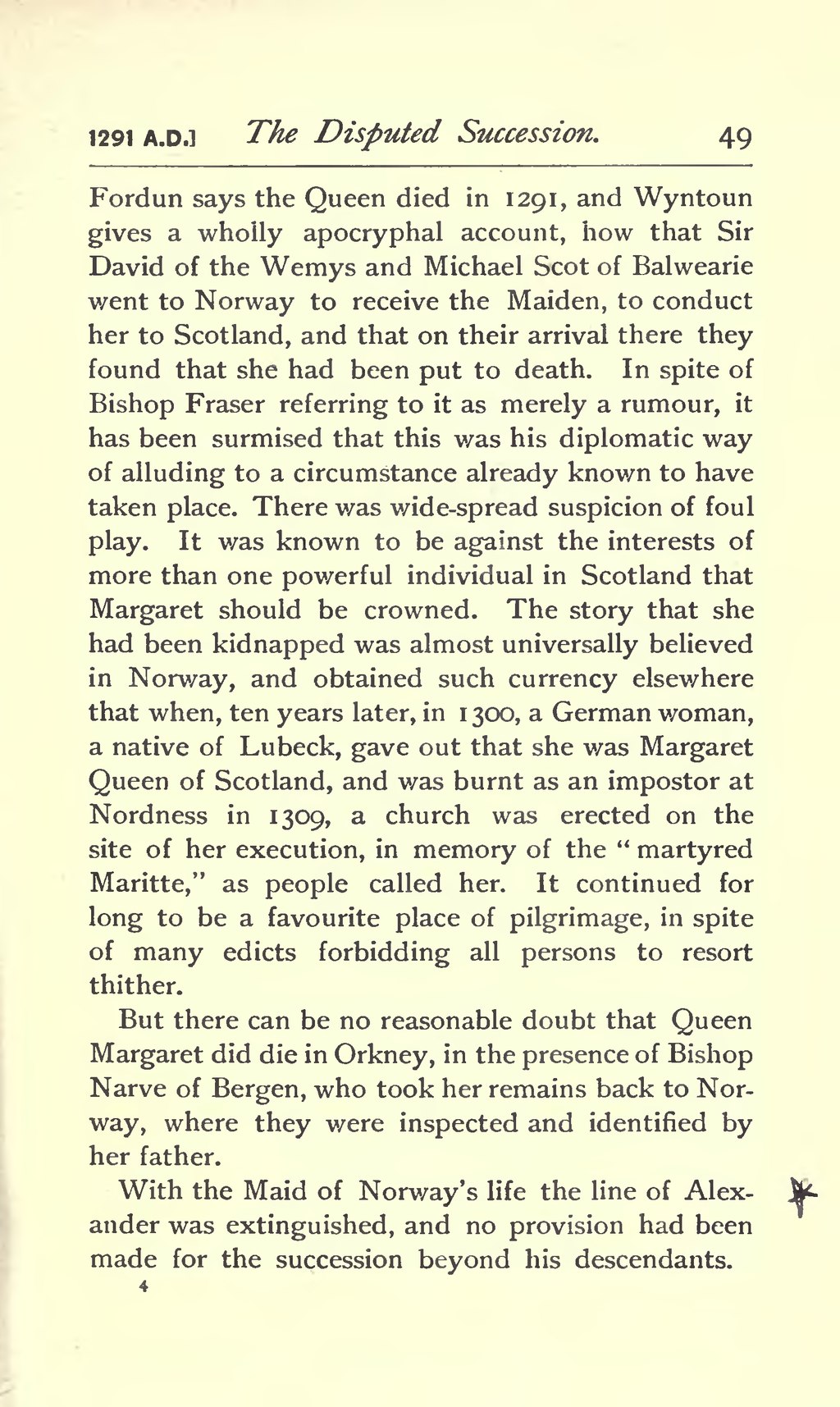Fordun says the Queen died in 1291, and Wyntoun gives a wholly apocryphal account, how that Sir David of the Wemys and Michael Scot of Balwearie went to Norway to receive the Maiden, to conduct her to Scotland, and that on their arrival there they found that she had been put to death. In spite of Bishop Fraser referring to it as merely a rumour, it has been surmised that this was his diplomatic way of alluding to a circumstance already known to have taken place. There was wide-spread suspicion of foul play. It was known to be against the interests of more than one powerful individual in Scotland that Margaret should be crowned. The story that she had been kidnapped was almost universally believed in Norway, and obtained such currency elsewhere that when, ten years later, in 1300, a German woman, a native of Lubeck, gave out that she was Margaret Queen of Scotland, and was burnt as an impostor at Nordness in 1309, a church was erected on the site of her execution, in memory of the "martyred Maritte," as people called her. It continued for long to be a favourite place of pilgrimage, in spite of many edicts forbidding all persons to resort thither.
But there can be no reasonable doubt that Queen Margaret did die in Orkney, in the presence of Bishop Narve of Bergen, who took her remains back to Norway, where they were inspected and identified by her father.
With the Maid of Norway's life the line of Alexander was extinguished, and no provision had been made for the succession beyond his descendants.
